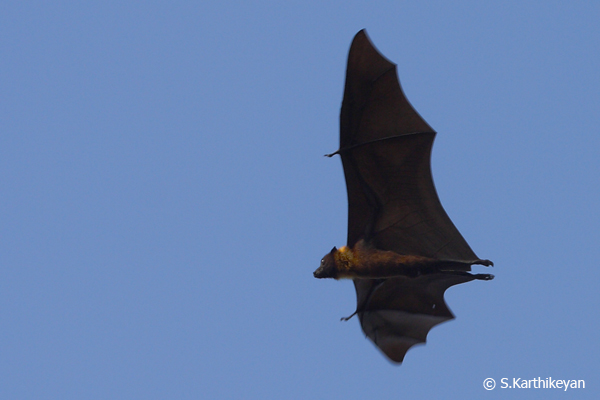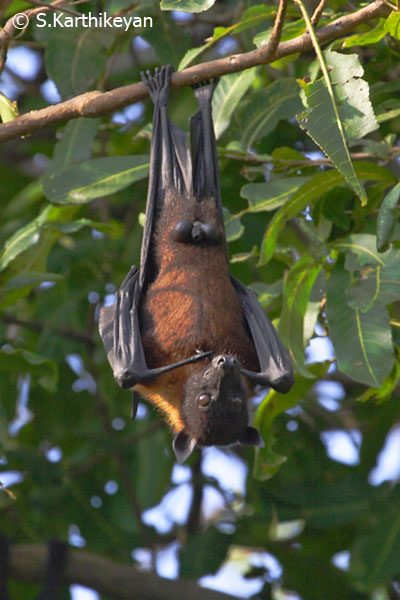If you thought that you have to travel hundreds of kilometres to see the largest bat on mainland India – think again. In fact, it is found in Bangalore itself! The wingspan of this bat – the Indian Fruit Bat (also known as the Flying Fox) – measures a whopping 4 feet!

Indian Fruit Bats are social animals and in the habit of roosting in large noisy colonies. A single roosting site may have a hundred or more individuals and at times may exceed a thousand of them. These bats often roost on large trees which have spreading branches and at some places they choose bamboo clusters.
Trees in the heart of busy areas in cities and villages may also be used. In fact, there are some such roosts in Bangalore (e.g. Basavangudi, Infantry Road). There is also a large colony in the Ranganthittoo Bird Sanctuary near Mysore (see picture). Similar roosts can be seen at several places across Karnataka.
The Flying Fox has a dark brown body and black wings. Males have a light yellow colour on the back of the neck and shoulders. They move among the branches with the help of their claws.

The diet of these bats and their movements are dependent on the flowering and fruiting of trees. These bats are known to have a good memory of fruiting time and location of trees. Soon after sunset, one can see all the bats of a colony flying away in search of fruiting trees.
At times injured bats or even young pups turn up at rehabilitation facilities. These can be taken care of easily with a little patience and can be hopefully rehabilitated. The roosting trees that fall prey to ‘developmental activities’ are threatening the very existence of these interesting animals.
Several myths surround bats. A little effort on our part to understand bats would only fill us with plenty of appreciation for the services rendered by these nocturnal creatures and leave us spellbound.